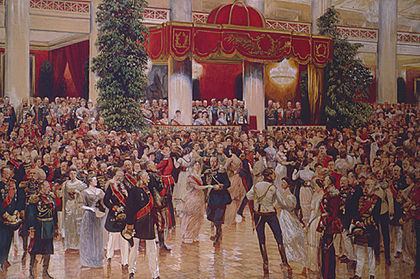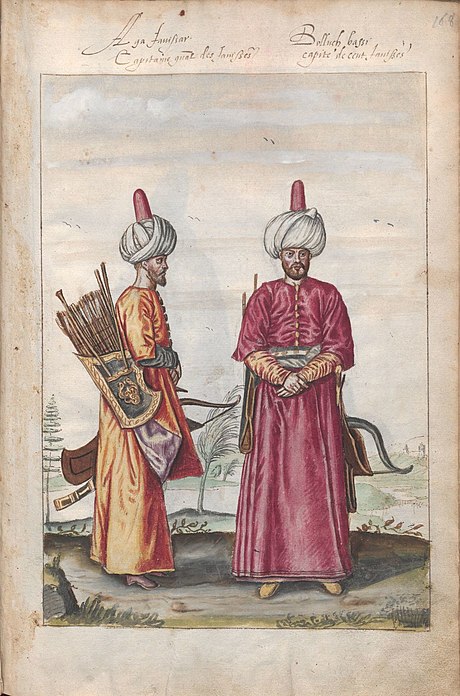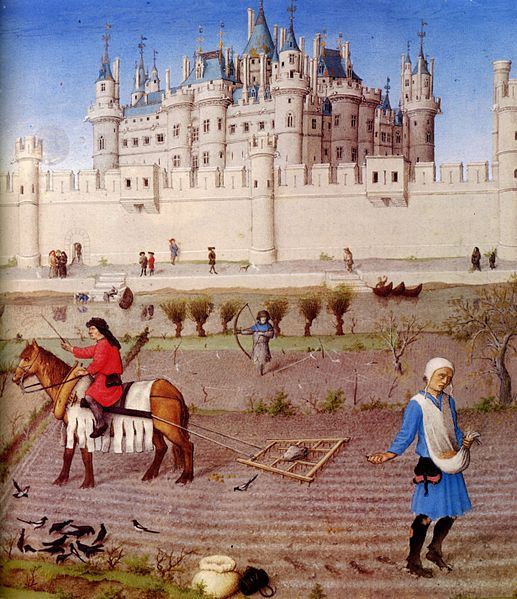Feudal Europe
Less than two hundred years ago, much of the world still operated under the land ownership system established independently throughout history. Although industrialization was well underway in Western Europe, the landed aristocracy still retained a great degree of wealth, deriving income from the land they owned. Many other societies had not yet experienced industrialization, and the feudal structure remained strong. Even in the United States, a frontier society that claimed egalitarianism as a founding principle, southern plantation owners lived like traditional aristocrats, collecting income from the land.
In much of human history, society was roughly divided between nobles who owned the land, and peasants who worked the land. Of course, nobles often have to offer military service in exchange for their land, even forming distinct occupational castes such as the knights of Europe or the samurai of Japan, but otherwise they can collect their landed income without much personal maintenance. Rulers and monarchs may have to establish their rule through the point of the sword or the edge of the axe, but once established they can freely collect taxes on their subjects and income from their lands, often with their courtiers managing their affairs for them.
Until industrialization, great wealth often came in the form of land ownership. The nobles who owned a lot of land can receive regular income from the agricultural produce and natural resources the land generated without personally working on the land or even managing the business affairs, as the peasant class worked the land in exchange for a percentage of the produce, while more educated commoners managed the business affairs.
Instead, landed nobles would go off to war, and as long as they were able to protect their land, their regular income was secure. If victorious on foreign adventures, they can even expand their territories and collect additional income from their new lands.
During peacetime, nobles would have a lot of leisure. Since their income was passive, they were financially free and had the time to do what they desired. Sometimes they would attend dinner parties, balls, tourneys, or other events and ceremonies. Other times they can read, paint, write, practice and compose music, and contribute to the cultural development of their nation. They can go hunting, play sports, go for swims, or enjoy other physical activities. Indoors, they can play chess, cards, dice, or other board games with family and friends. They had ample time to socialize, pursue romantic affairs, and simply enjoy the pleasures of life.

Aristocrats at a ball
Life was good for the nobility precisely because of the passive income that came from their landed estates.
Passive income is income that you receive with little to no work to maintain it. Although we in the modern day are well past the agricultural economy of the feudal ages, there are many sources of passive income in the modern world that will allow you to be as financially free as the traditional aristocrat. Owners of successful businesses derive great wealth from business profits, while their employees have to make do with trading their time for a salary. Those who own real estate can earn rental income. If their properties can generate agricultural produce or have natural resources, they can earn income from that as well. Creative individuals who own intellectual property, such as patents, books, music, films, etc., can monetize their intellectual property. Those who have created content on social media can also monetize that content through social media monetization programs. There are many examples of passive income sources in the modern world.

Owning real estate is one way to generate passive income
Since industrialization and the rise of the modern middle class, the education system and popular media have emphasized the importance of getting a good job and having a career as the means of financial security. This path of wage reliance does not create true financial freedom.
As a result, many people today are stuck in a cycle of working to pay the bills, spending whatever is left over, with no way out until the retirement age, which is usually in their 60s or 70s. They are bound to their employers just as the peasants and slaves of earlier times were bound to their lords and masters. If they left their jobs, they will fall into poverty as they have no other source of income. If they incur the wrath of their employers, they may get fired and have poverty thrusted upon them. If their employers suddenly face ruin, they may also face the same fate. It is the same situation as that of the peasants and slaves of earlier times, who face the possibility of starvation if they ran away; punishment, exile, or even execution if they incur the wrath of their lords and masters; and if their lords and masters face ruin they may also share the same fate.
Many comfort themselves with the illusion that they are free because they may take another job, but they will still be bound to a job. Peasants and slaves can also switch lords and masters. That does not make them free.
The better educated can take higher paying jobs. They may be able to afford bigger houses or apartments, nicer cars, and fancier clothes, but this more luxurious lifestyle will come crashing down if they lost their jobs. Likewise more educated commoners or slaves can work in the manor houses, the castles, and the offices, away from the backbreaking work in the fields. They may also have nicer lifestyles, but this is all subject to the authority of their lords and masters who can take it all away.
After decades of working for a salary, wage earners can retire in their 60s and 70s. They may have accumulated savings and even earned a pension. Since they have no other source of income, they would have to make sure their savings and pension will be enough to live off of until they pass away, financial restraints never leaving their lives. They cannot spend beyond their means and are not truly wealthy. Even if they managed to climb the corporate ladder and earned high wages during their careers, they are still bound by the limits of their savings and pension.
That is not to say some people do not enjoy their jobs, there are definitely those who genuinely do. There are also peasants and slaves who can find enjoyable work. In Ancient Rome, educated slaves could become doctors, teachers, and engineers, all highly respectable professions today. During the Ottoman Empire, slaves could become elite warriors and government officials. Just like a minority of peasants and slaves of earlier times may have actually enjoyed their work, there are some today who also genuinely enjoy their jobs, but they are not financially free and are not masters of their own fate.

Ottoman Jannisaries, elite slave warriors
The point of the historical analogies above is to highlight how similar wage slavery is to historical forms of servitude. True, some may find satisfaction with their work, but a good number also may not, and regardless they are not as free as the people they work for.
One option to escape wage slavery is to become self employed. This will grant you greater freedom and control over your life, but you will still be bound by financial necessity as you still have to work in order to earn a living. However, self employment could be a path to building greater wealth, as the sources of your wealth are now under your control. It is analogous to the middle class of earlier times: the small farmers who worked their own lands, the physicians who practiced at their own practices, or the blacksmiths and bakers who ran their own stores. One can even think of the itinerant knights and samurai of the middle ages, or the bounty hunters of the American wild west, who held quite a lot of prestige but were still below in wealth and status to the aristocrats who owned land and industry.
Which loops us back to the original historical analogy of this essay: the aristocrats were the ones who had true financial freedom. They lived life without having to do anything out of financial necessity. Why? Because they had passive income from the land they owned. Aristocrats could spend all the cash they have and still have more coming in. They didn’t have to work for a living and could live life on their own terms. Likewise, the owners of passive income sources are the aristocrats of today. Those who own the businesses, the real estate, the intellectual property, the media channels and platforms, and everything else that drive the modern world are the ones at the top of the financial hierarchy.
Passive income frees you from having to do anything out of financial necessity. However, acquiring passive income sources doesn’t come easy. You will either have to put in the time to build them, or you would have to put in the money to buy them. And even if you have passive income sources, you aren’t financially free until they can generate enough income for you to live comfortably without needing to take a job. Thus, growing your passive income sources is incredibly important, especially if you desire a more luxurious lifestyle.
Aristocrats of earlier times also had to acquire their lands, the primary source of passive income in those times. Either they or their ancestors had to win them through wars, or receive them through military or governmental service, or buy them with their own money.
Build your sources of passive income. Aim to own the businesses that the wage earners work for. Acquire real estate. Create or buy intellectual property that you can monetize. Establish your own media channels or platforms. Own the things that drive the modern world, and you will be at the top of the financial hierarchy, you will enjoy financial freedom, and you can live life on your own terms.
Note: I used historical analogies throughout this article because class distinctions were much more obvious from a historical perspective. Due to rapid industrialization and social change during the past two centuries, class distinctions have been blurred. Readers today can easily see the economic divide when looking at the past. The historical analogies serve to help readers see the same economic divide between those who own and those who work that exists today.
Thank you for reading and make sure you subscribe to see more articles like this.
